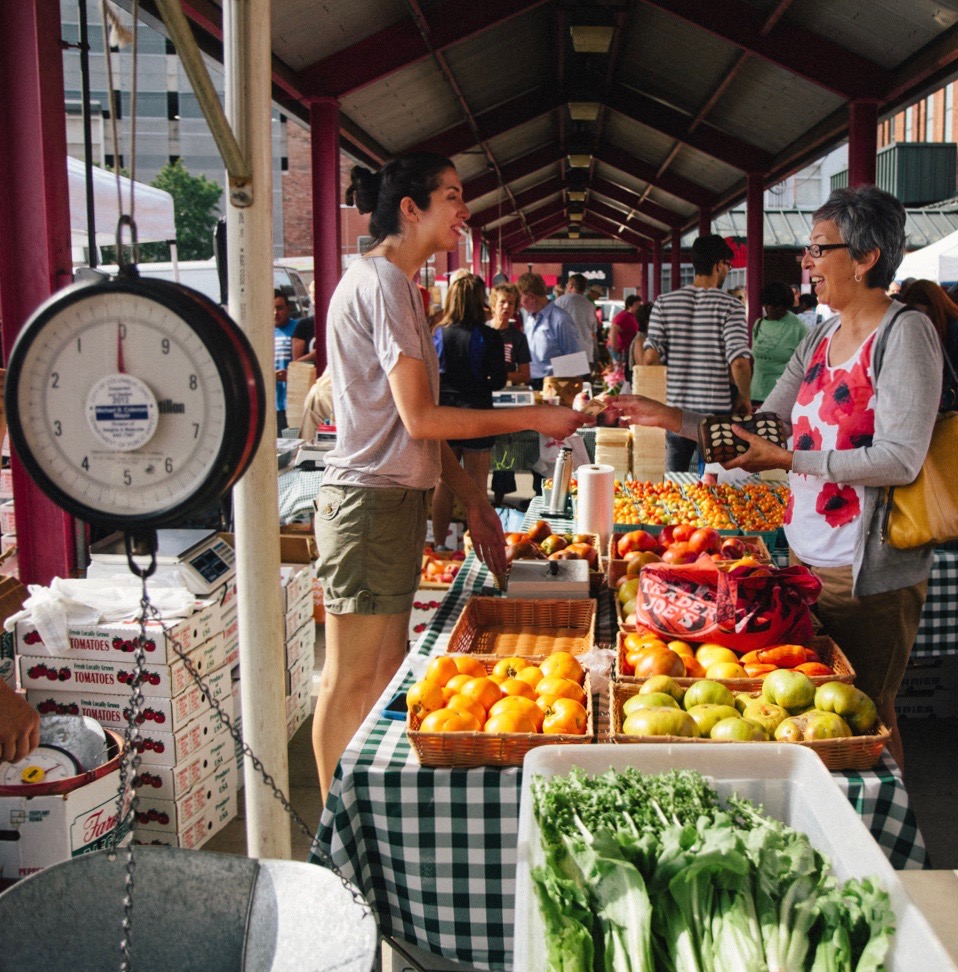Friday, June 5, 2020

Where Did All The Farmers Go?
There were 7.6 million family farmworkers – nearly 64% of the labor force – in the mid 1800s, while today that number is a mere 1.9 million. Families living on farms tended to eat well because fruits, vegetables, milk, eggs, and meat were a steady part of their diet. This resulted in children getting the nutrients needed for development and growth.
But That Was Before Monsanto.
Between 1929 and 1971, PCBs were manufactured in Anniston, Alabama. Monsanto Company purchased the facility in 1935. The Environmental Protection Agency estimates that 1.4 billion pounds of PCBs were produced before the plant closed in 1971.
Court documents show that liquid waste discharged from the plant containing PCBs made its way to Snow Creek at a rate of up to 250 pounds per day, with an additional contribution to air emissions calculated as approximately two pounds per day. In addition, nearly 1 million pounds of PCB-containing waste was deposited into uncapped landfills (finally capped in the 1980s) southwest of the manufacturing facility. Locally raised chickens and hogs showed high levels of PCB contamination, as did fish, leading to a “no consumption” fish advisory set in place in 1990 and that is still in effect today.
Monsanto Round 2.
Monsanto’s damage to the environment and human health continued with their use of the agricultural chemical Glyphosate, a known bee killer. Glyphosate is one of the active ingredients in Roundup weed killer. Because activists have been fighting this chemical giant and the way word has spread on the dangers of this chemical because of that activism, when Bayer (think aspirin) acquired Monsanto it decided it would no longer use the name!
But Roundup’s damage is long lasting and pervasive. While I commend Cheerios for offering free wildflower seeds that will attract bees, according to the Environmental Working Group the cereal Cheerios tested at 729 ppb of this pesticide. Please take 3-minutes to watch (and share!) this video on glyphosate.
Genetically Modified.
What exactly is a GM food? According to the NonGMO Project a “genetically modified organism is a plant, animal, microorganism or other organism whose genetic makeup has been modified in a laboratory using genetic engineering or transgenic technology. This creates combinations of plant, animal, bacterial and virus genes that do not occur in nature…”
The NonGMO Project is one of the most trusted organizations in North America verifying the GMO content of foods. When verified as GMO free it is given their seal. I’m sure you will recognize this seal. There is also an app one can download on their smartphone to scan the barcode of foods to determine if it has been verified as GMO free.
The Collaborative on Health and the Environment states that in 2016 the USDA reported 92% of all corn and 94% of all soybeans used genetically modified seeds. Beginning in 2014 note how a leveling off or even a small decline occurs. Wonder why? It’s because we vote with our grocery dollars on whether we want GMO food or not and it looks like manufacturers are getting our message! Keep scrolling down on their link. Halfway down the page you’ll see an interesting chart and section on the adoption of genetically engineered crops in the U.S.
Why All The Fuss About Pesticides?
Take, for instance, chlorpyrifos. Just one more pesticide and yet one more reason to eat organic whenever possible. The Natural Resources Defense Council reports that this chemical, while toxic to kids, is still being sprayed on our crops. A report by the California Department of Public Health stated that farms spray pesticides within ¼ mile of more than 430 schools in the Cali’s Central Valley.
Beyond Pesticides has created a Pesticide-Induced Disease Database where one can explore pesticides in relation to Alzheimer’s, asthma, birth defects, cancer, endocrine disruption, learning and developmental issues, Parkinson’s, and reproduction/sexual dysfunction. It’s a very sobering activity but you’ll understand the importance of going organic as much as you can, especially for vulnerable populations such as pregnant and nursing women, infants, and children.
Back To The Farm Market.
Cornucopia offers a downloadable pocket guide that helps you to ask the right questions at a farmers market when organic is not available. After all, these markets still offer fresh and seasonal food that is locally grown. To locate a Farmer’s Market near you, visit the USDA’s National Farmers Market Directory and enter your zip code.
Community Supported Agriculture (CSA) Farms offer weekly deliveries of locally grown farm products during one or more harvest seasons on a subscription or membership basis. Consumers have access to a range of farm products offered by a single farm or group of farmers with an advance payment of a subscription or membership fee. You can find a CSA farm using your zip code.
On-Farm Markets are managed by a single farm operator and will sell products directly to consumers from either a location on their farm property or on property adjacent to that farm. Is there one near you? Check by zip code.
Maybe you’re interested in growing your own garden this year. Check out my blog on Planning A Chemical Free Garden for information on heirloom and non-GMO seeds, as well as safer herbicides and pesticides.
Animal Welfare Ratings.
We see dozens and dozens of labels on our foods today. Are they meaningless or relevant? How do we know? Visit this link for 33 different labels and advice as to which are the best and which labels we should beware of – like “cage free chicken” or “ethically raised, responsibly raised, thoughtfully raised” – it’s really interesting!
Lastly, Cornucopia’s Organic Poultry Scorecard “surveys more than 60 marketplace brands of chicken and turkey, highlighting authentic organic producers and exposing industrial-scale, faux-organic producers and brands.”